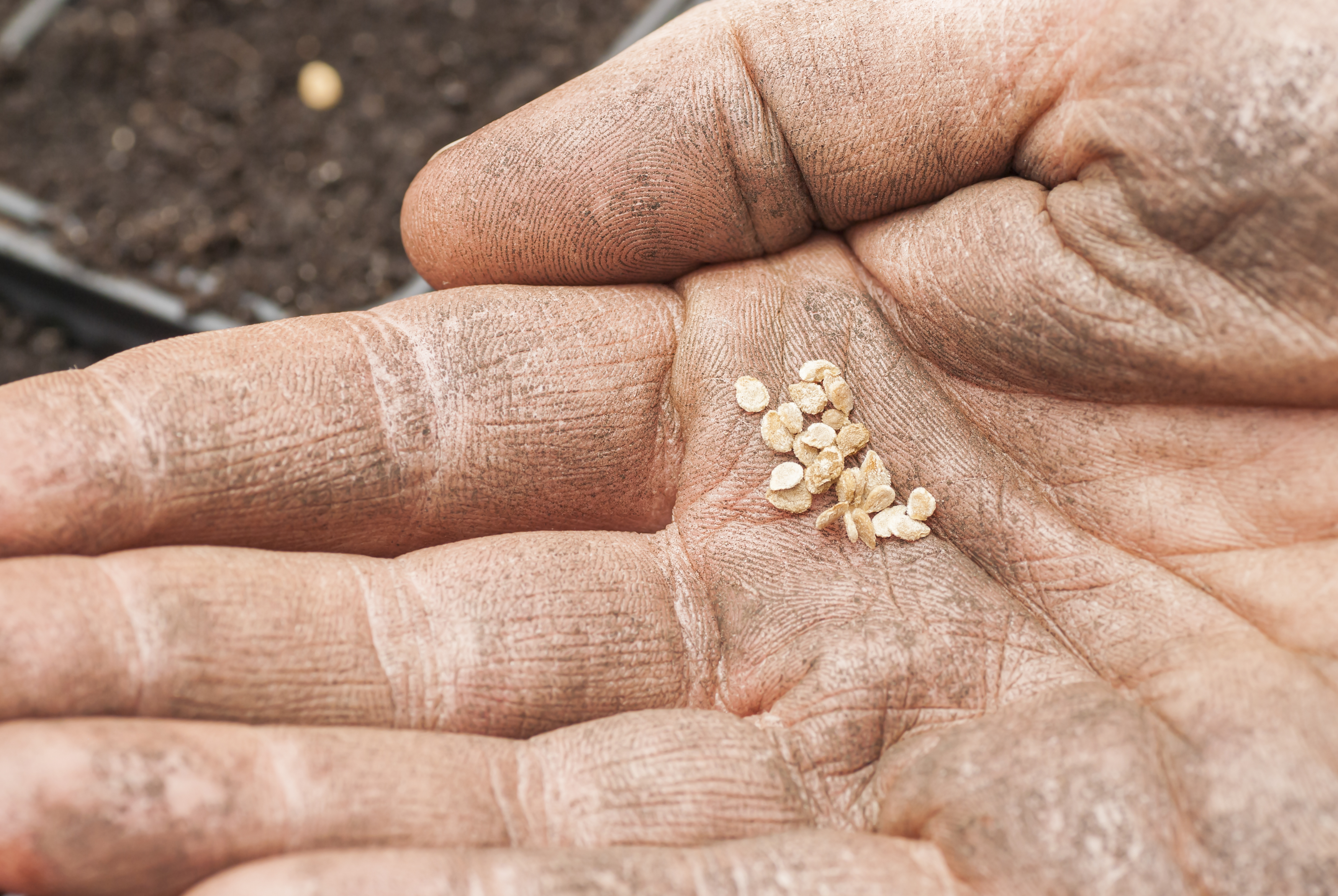The GardenZeus Guide to Starting Tomato Seeds

Tomato seeds are easy to germinate. GardenZeus recommends germinating tomato seeds directly in small pots for later transplanting; or on a paper towel kept moist in a covered glass dish, with sprouted seeds then moved into small pots or transplanted directly outdoors as soon as a root emerges. Tomato seeds can also be started directly outdoors when frost risk is low and daytime temperatures are consistently 65°F and above.
Plant tomato seeds about 1/4-inch deep. If starting seeds directly outdoors, space seeds a few inches to several inches apart for later thinning to the strongest plants. Pay special attention to maintaining soil moisture as seedlings may die quickly after germinating if upper soil dries out completely. It may be necessary to mist or water seeds and young sprouts 2 or more times per day to prevent them from drying out and dying.
Germinate tomato seeds a light soil mix; preferably in healthy, biologically active soil; and in an area with ample light. Cover seeds with about 1/8-to-1/4 inch sand or fine soil and keep seeds consistently moist but not wet. Temperatures of 65° to 85°F degrees are best for germinating tomato seeds, with an ideal temperature of 85°F.
GardenZeus recommends starting extra seeds to ensure that you have plenty of strong seedlings and don’t need to fill out your planting areas with weak or damaged seedlings. You may wish to start 3 or more seeds per small pot and thin out all seedlings but the single strongest for later transplanting.
Seeds generally germinate more quickly with bottom heat, such as from an appliance or germination heating mat or pad (do not germinate seeds with heating pads meant for human use, which are not designed to accommodate moisture or use for long periods and may be hazardous for fire or electrical shock).
Tomato seeds should germinate within 5 to 7 days if kept moist at temperatures of 70° to 85° F. If more than a week has passed under these conditions, investigate your seeds. Something may have gone wrong or you may need to replant.
After germination, seedlings require ample light; generally the more light the better for tomato seedlings. If growing tomato seedlings indoors, GardenZeus recommends grow lights or as much sunlight and artificial light as possible help encourage strong growth and healthy seedlings. Under conditions of insufficient light, seedlings become leggy, weak, spindly, and more prone to disease. Leggy seedlings may still fruit productively if planted deeply and provided good care.
To start tomato seeds in a glass dish or bowl:
1) Wet a paper towel and place it into a large flat bowl or dish that has a firmly fitting lid.
3) Place the tomato seeds onto the wet paper towel, spacing them at least one inch apart. Put the lid onto the bowl or dish to create a humid environment.
4) Place the dish in a warm-but-not-hot area indoors, out of the sun, preferably at temperatures of 70° to 85°F for at least a few hours each day.
5) Monitor seeds daily. Add water as needed to keep the paper towel moist but not wet. Tomato seeds may take 3 to 12 days or longer to germinate, with longer germination times when temperatures drop below 70°F.
6) Remove sprouts as soon as possible after germination from the bowl or dish. Be careful not to damage tiny roots; tear the paper towel if necessary.
7) Plant sprouts in cells or small pots to grow into seedlings, or plant directly outdoors in a protected area. Cover sprouts in soil up to the base of their first tiny leaves, or cover the entire sprout with soil if no leaves are visible.
8) Sprouts need moist soil and partial shade for at least a week or two to safely establish outdoors.
Regardless of germination method, it’s best to harden off all transplanted tomato seedlings for about 7 to 14 days (depending upon the harshness of your outdoor conditions, with longer periods during hot and cold weather) before transplanting or exposing to full sunlight all day.
GardenZeus has customized growing information for tomato by zip code. To get started, enter your zip code here.
Other articles of interest:
Seven Steps to Selecting Tomato Varieties
Yellow Leaves on Tomato Plants: A GardenZeus Guide, Part 1 of 3